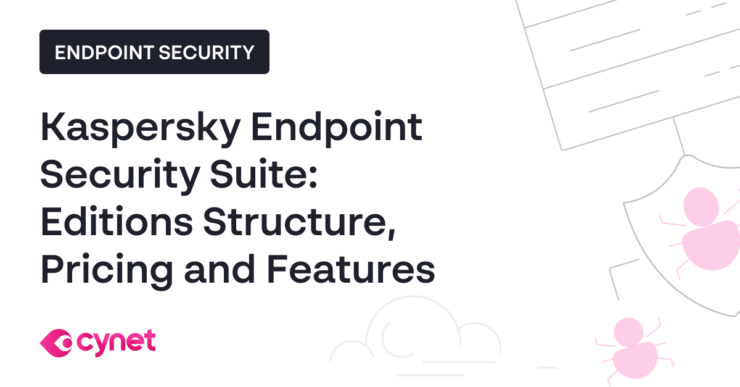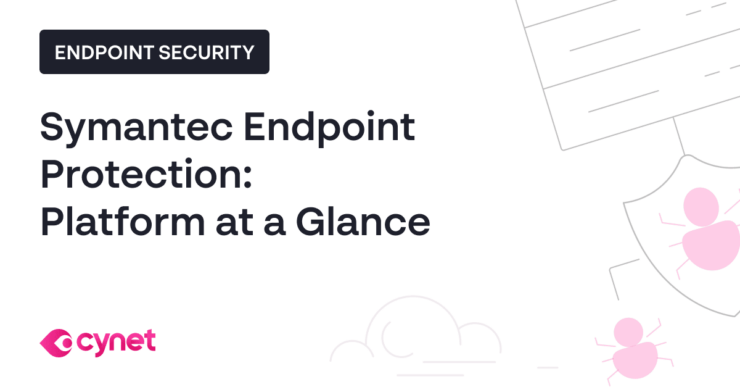Last Updated:
May 12, 2025
SentinelOne and CrowdStrike are both well-knowntrusted endpoint security solutions for the enterprise, but while they often appear side-by-side in analyst reports and comparison charts, these platforms take very different approaches when it comes to architecture, automation, and pricing.
This guide breaks down 5 essential differences between SentinelOne and CrowdStrike and also analyzes the differences between their pricing plans. After reading this guide, you’ll be able to decide which solution fits your organization’s unique needs or if you should go in another direction.

What Is SentinelOne?
SentinelOne is a cybersecurity company that specializes in endpoint protection, detection, and response. Founded in 2013, its core product is the SentinelOne Singularity Platform, which provides real-time threat detection and prevention for various devices, including desktops, laptops, servers, and IoT devices.
By leveraging machine learning and behavioral analysis, the platform can autonomously identify and mitigate cyber threats, such as malware, ransomware, and fileless attacks. SentinelOne’s platform integrates with existing security infrastructure, helping minimize the attack surface and reduce incident response times.
What Is CrowdStrike?
CrowdStrike is a cybersecurity company that provides cloud-native endpoint protection, incident response, and threat intelligence services. Founded in 2011, its flagship product is the CrowdStrike Falcon platform, which uses machine learning techniques to detect, prevent, and respond to cyber threats in real-time. The platform offers protection against various attacks, including malware, ransomware, and advanced persistent threats (ATPs).
CrowdStrike is a cloud-based platform, that can secure endpoints and provide insights into potential threats, while reducing system impact and operational overhead.
This is part of a series of articles about endpoint security.
SentinelOne vs. CrowdStrike: Key Differences
SentinelOne Core Offering
SentinelOne’s core offering is the SentinelOne Singularity Platform, which employs an AI-driven agent to autonomously identify and mitigate cyber threats. By using machine learning and behavioral analysis, the AI agent can detect and respond to known and unknown threats, including malware, ransomware, and fileless attacks.
Core features include:
- Singularity for Endpoint – Protection, detection, and response across endpoints and identities.
- Singularity for Cloud – CNAPP security, including CWPP, CSPM, CDR, AI-SPM, CIEM, EASM, Graph Explorer, KSPM, and DevSecOps,
- Singularity for Identity – Identity attack surface reduction, threat detection and response, posture management, and deception for asset protection.
Singularity is available through 5 different pricing packages:
- Singularity Core – $69.99 per endpoint/year
Includes Next-Generation Antivirus (NGAV), EPP, RBAC, and multi-tenancy management.
- Singularity Control – $79.99 per endpoint/year
Includes all Core features, plus advanced EPP controls (e.g., device and firewall control, remote shell), CWPP, autonomous prevention, detection, and response, and EDR.
- Singularity Complete – $179.99 per endpoint/year
Includes all Control features, plus an AI security assistant, 14-day data retention, and an option for an Agentic AI SOC Analyst.
- Singularity Commercial – $229.99 per endpoint/year
Includes all Complete features, plus 30-day data retention, identity threat detection and response, managed threat hunting, and an option for MDR.
- Singularity Enterprise – Custom pricing
Includes all Commercial capabilities as well as network discovery, forensic data collection, onboarding and deployment, and training.
CrowdStrike Core Offering
CrowdStrike’s flagship product is the Falcon platform, a cloud-native endpoint protection solution that offers several editions and modules to address different aspects of cybersecurity. These include:
- Endpoint security
- Exposure management
- Identity protection
- SaaS security
- Threat intelligence and hunting
- Cloud security
- Data protection
- And more
CrowdStrike offers four main Falcon bundles, each designed to meet varying cybersecurity needs and organizational sizes. Here’s a breakdown of each package, its features, and pricing:
1. Falcon Go – $59.99 per device/year
Includes Next-generation antivirus (NGAV), USB device control, mobile device protection, and support.
2. Falcon Pro – $99.99 per device/year
Includes all Go features, plus firewall control. Mobile device protection is an add-on.
3. Falcon Enterprise – $184.99 per device/year
Includes all Pro features, plus threat hunting and intelligence, and XDR. This includes EDR capabilities.
4. Falcon Complete MDR – Pricing available upon contacting the vendor.
Includes all Enterprise features, plus 24/7 managed detection and response (MDR) and IT hygiene assessments. Device control, identity assessments, mobile device protection, and support are available as add-ons.
Learn more in our detailed guide to Bitdefender EDR, an alternative to CrowdStrike EDR
SentinelOne vs. CrowdStrike: Key Differences
Here is a summary of the main differences between the two platforms:
- AI Agent vs. cloud-native architecture: SentinelOne’s AI-driven agent operates locally on each endpoint, providing real-time protection without the need for cloud connectivity. In contrast, CrowdStrike’s Falcon platform is a cloud-native solution that relies on cloud-based analytics and processing for threat detection and prevention. This architectural difference means that SentinelOne may offer faster response times on the endpoint, while CrowdStrike benefits from the scalability and flexibility of a cloud-based infrastructure.
- Modular approach: CrowdStrike offers a more modular approach to its platform, with multiple editions and modules addressing specific cybersecurity needs. Organizations can choose the combination of modules that best suits their requirements, allowing for greater customization and scalability. SentinelOne, on the other hand, offers a more unified solution with its Singularity Platform.
- Threat intelligence: Both SentinelOne and CrowdStrike provide threat intelligence services, but CrowdStrike’s Falcon Intelligence module offers more comprehensive, actionable intelligence feeds, reports, and API access. This helps security teams better understand the threat landscape and make informed decisions about their security posture. While SentinelOne does offer some threat intelligence capabilities, they are not as extensive as those provided by CrowdStrike.
- Detection Capabilities: Both SentinelOne and CrowdStrike offer advanced detection capabilities across endpoints and the cloud. CrowdStrike boasts wider coverage, but both solutions provide similar results.
- Managed Services: Both CrowdStrike and SentinelOne offer 24/7 threat hunting, detection, and response capabilities. This allows security teams to benefit from external expertise in case of a breach. SentinelOne’s approach is more human-led, while CrowdStrike leads these services with AI.
SentinelOne vs. CrowdStrike: Pricing Breakdown
How do SentinelOne and CrowdStrike compare in terms of pricing? Here’s a breakdown:
Package Pricing
- SentinelOne – $69.99 – $229.99
- Crowdstrike- $59.99 – 184.99
Verdict: Crowdstrike offers slightly lower prices
Package Capabilities
| Tier |
SentinelOne |
CrowdStrike |
| 1 |
Includes Next-Generation Antivirus (NGAV), EPP, RBAC, and multi-tenancy management. |
Includes Next-generation antivirus (NGAV), USB device control, mobile device protection, and support. |
| 2 |
Includes all Core features, plus advanced EPP controls (e.g., device and firewall control, remote shell), CWPP, autonomous prevention, detection, and response, and EDR. |
Includes all Go features, plus firewall control. Mobile device protection is an add-on. |
| 3 |
Includes all Control features, plus an AI security assistant, 14-day data retention, and an option for an Agentic AI SOC Analyst. |
No equivalent option available |
| 4 |
Includes all Complete features, plus 30-day data retention, identity threat detection and response, managed threat hunting, and an option for MDR. |
Includes all Pro features, plus threat hunting and intelligence, and XDR. |
| 5 |
Includes all Commercial capabilities as well as network discovery, forensic data collection, onboarding and deployment, and training. |
Includes all Enterprise features, plus 24/7 managed detection and response (MDR) and IT hygiene assessments. Device control, identity assessments, mobile device protection, and support are available as add-ons.
|
Verdict: SentinelOne offers more capabilities per package, and advanced services are offered at a lower tier (and less costly) packages compared to CrowdStrike.
For example, endpoint protection and MDR are offered in lower tiers by SentinelOne compared to CrowdStrike.
In addition, AI capabilities are not highlighted in CrowdStrike’s packages, and it’s unclear whether and how they are offered.
SentinelOne vs. CrowdStrike: How to Choose
In conclusion, SentinelOne and CrowdStrike are both capable cybersecurity solutions, each offering unique advantages. SentinelOne’s AI-driven agent and unified platform provide efficient, real-time protection, while CrowdStrike’s cloud-native architecture and modular approach offer scalability and flexibility, with multiple modules addressing various security needs.
Ultimately, the better option depends on an organization’s specific requirements, security objectives, and preferences. By carefully considering the differences between SentinelOne and CrowdStrike, organizations can make an informed decision to select the solution that best aligns with their cybersecurity strategy and bolsters their overall security posture.
Cynet All-in-One: Ultimate SentinelOne and CrowdStrike Alternative
Cynet All-in-One is a holistic security solution that protects against threats to endpoint security and across your network. Cynet provides tools you can use to centrally manage endpoint security across the enterprise.
Cynet’s intelligent technologies can help you detect attacks by correlating information from endpoints, network analytics and behavioral analytics with almost no false positives.
With Cynet, you can proactively monitor entire internal environments, including endpoints, network, files, and hosts. This can help you reduce attack surfaces and the likelihood of multiple attacks.
Learn more.
FAQs
Which offers better endpoint protection: CrowdStrike or SentinelOne?
Both CrowdStrike and SentinelOne are top-tier in endpoint protection, but they approach it slightly differently. CrowdStrike is generally considered more mature in terms of threat intelligence, proactive threat hunting, and integrations with broader security ecosystems. SentinelOne, however, shines with its autonomous EDR and AI-driven response capabilities, allowing it to mitigate threats even without cloud connectivity.
Which platform is easier to deploy: SentinelOne or CrowdStrike?
SentinelOne is usually reported as faster and easier to deploy, especially for organizations that want minimal manual setup. It is considered lightweight and highly autonomous, meaning less configuration and fewer dependencies out of the box. CrowdStrike’s deployment is also relatively simple (being cloud-native helps), but it sometimes requires more fine-tuning to fully leverage all advanced features.
Which endpoint protection platform offers better automation features?
SentinelOne is better known for its autonomous remediation and rollback capabilities, which are heavily AI-driven and require very little human intervention. It can kill processes, quarantine files, and even reverse the impact of ransomware without waiting for a human response. CrowdStrike also offers automation, but it’s often positioned more for orchestrated workflows rather than “instant” endpoint-based reactions.
How do SentinelOne and CrowdStrike handle zero-day threats?
Both platforms use behavioral models to detect anomalous activity, not just rely on known signatures, making them capable against zero-day threats. SentinelOne focuses heavily on on-device AI, meaning even if the device is offline, it can catch and stop zero-day exploits. CrowdStrike leverages cloud-based analytics and a vast telemetry pool to identify unusual behavior patterns early.
Who are the top SentinelOne competitors in endpoint protection?
The top competitors to SentinelOne include Cynet, CrowdStrike, Microsoft Defender for Endpoint, Palo Alto Networks Cortex XDR, Sophos Intercept X, and Trellix (formerly McAfee Enterprise + FireEye).
Is SentinelOne a good alternative to CrowdStrike?
SentinelOne is a very strong alternative to CrowdStrike, especially if your enterprise values automated threat mitigation, offline capabilities, and simplified management. It tends to appeal to companies that want powerful protection without needing a full SOC team to operate it.



